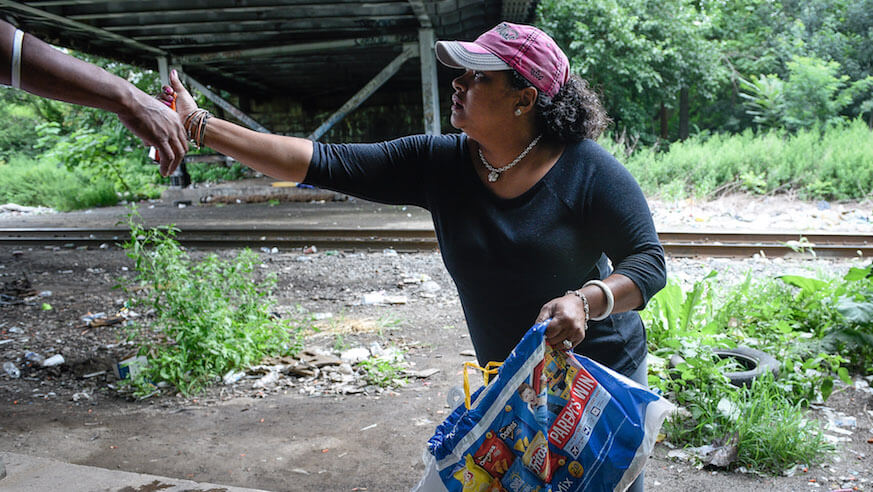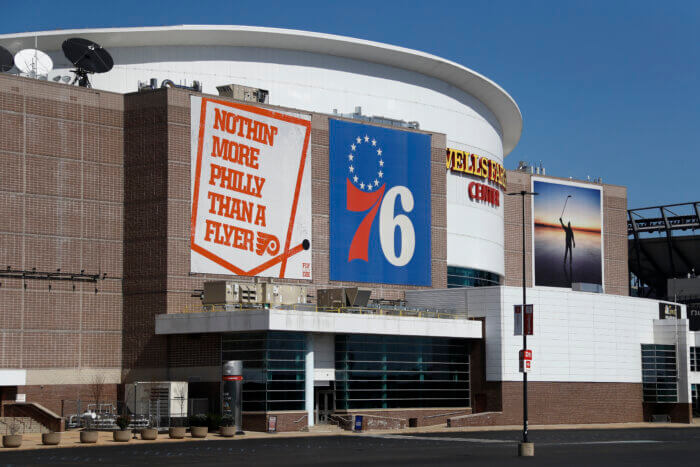A notorious encampment of heroin users along the unused Conrail railroad tracks was recently cleared out by Conrail and the city, with much fanfare. Health and social services were made available by the city to individuals exiting the filthy, needle-strewn gulch.
But one month later, some locals say the city hasn’t finished the job it started.
“The only thing you’ve done is clean up the tracks. That doesn’t mean anything when you’ve got them all walking above,” said Roz Pichardo, a local volunteer in addiction services who says drug users from the tracks have now spread into surrounding neighborhoods. “Nothing is happening, other than they moved them to somewhere else.”
Despite the city stationing resources for addicts just outside the Campamento, it seems many drug users declined to leave and just shifted their residences to the streets of the neighborhoods around the old tracks.
Pichardo said addicts are “sleeping on doorsteps” and are still able to obtain their drugs in the area. She personally administered Narcan to two individuals last week who got an overly strong batch from one of the local dealers.
“They’re hooked. But the fact of the matter is they were put out of what they considered home,” she said. “Half of them don’t have IDs. A lot of the services require ID, documentation they don’t have.”
While the city is continuing to station an intake RV offering services at A and Tusculum streets, they are also dealing with the reality that not all drug users will agree to pursue treatment.
“We need folks to have empathy and understand that individuals are in the grips of an active addiction, which is a disease,” said Joanna Otero-Cruz, deputy managing director of community services.
Before the cleanup began at the beginning of August, city officials told Metro they had sufficient capacity to provide housing and other social services for everyone living in the so-called El Campamento, where overdoses were common.
But out of some 600 unique individuals that city workers encountered in the area, only 20 percent, or about 120 people, engaged and followed up to tap into those services, Otero-Cruz said.
“We know people are putting mattresses out and setting up shop in residential areas,” she said. “We’re monitoring those service requests that come into 311 on a daily basis.”
The city is asking community members to talk to individual users and urge them to pursue services, call 311 to report illegal activity or to call the city’s homelessness hotline at 215-232-1984.
But the persistence of the problem is a sign of how seriously the national opioid epidemic is affecting Philadelphia, she said.
“Disproportionately, it has impact in Northeastern Philadelphia, Fairhill and West Kensington, because we know it has become the epicenter,” she said. “It is the purest and it is the cheapest. We are at the epicenter that is supplying the eastern side of the United States.”
Pichardo, who volunteers with Prevention Point, a one-stop shop for social and medical services for addicts, sees the life of addicts firsthand. And beating the addiction is the hardest obstacle of all, she said.
“The only thing that makes it difficult for us is a lot of them are not ready to get clean,” she said. “We can’t make people go to detox. But we’re always putting a bug in their ear, ‘Are you ready yet?’ … We constantly, constantly remind them, ‘Are you ready yet? Are you ready yet? This is no way to live.'”




























